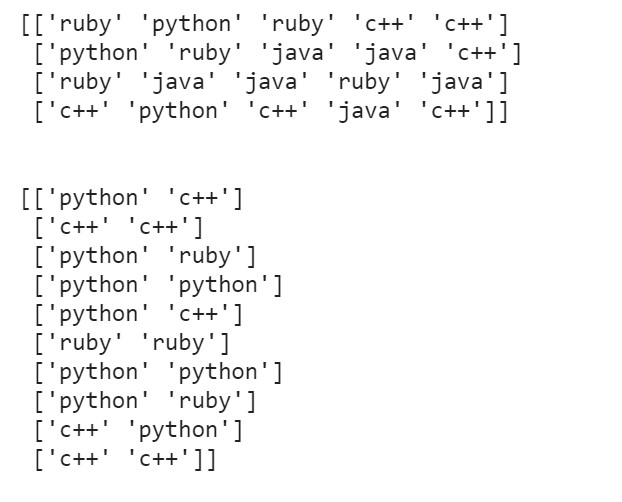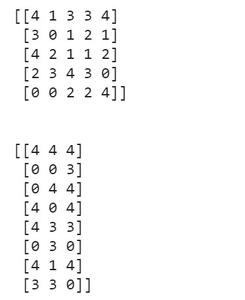How to randomly select elements of an array with NumPy in Python ?
Last Updated :
02 Dec, 2021
Prerequisites: Numpy
The random values are useful in data-related fields like machine learning, statistics and probability. The numpy.random.choice() function is used to get random elements from a NumPy array. It is a built-in function in the NumPy package of python.
Syntax: numpy.random.choice( a , size = None, replace = True, p = None)
Parameters:
- a: a one-dimensional array/list (random sample will be generated from its elements) or an integer (random samples will be generated in the range of this integer)
- size: int or tuple of ints (default is None where a single random value is returned). If the given shape is (m,n), then m x n random samples are drawn.
- replace: (optional); the Boolean value that specifies whether the sample is drawn with or without replacement. When sample is larger than the population of the list, replace cannot be False.
- p: (optional); a 1-D array containing probabilities associated with each entry in a. If not given then sample assumes uniform distribution over all entries in a.
Approach
- Import module
- Create a sample array
- Randomly choose values from the array created
- Print the array so generated.
Given below is the implementation for 1D and 2D array.
Generating 1-D list of random samples
Example 1:
Python3
import numpy as np
prog_langs = ['python', 'c++', 'java', 'ruby']
print(np.random.choice(prog_langs, size=8))
print(np.random.choice(prog_langs, size=3, replace=False))
print(np.random.choice(prog_langs, size=10,
replace=True, p=[0.3, 0.5, 0.0, 0.2]))
|
Output :

Example 2:
Python3
import numpy as np
samples = 5
print(np.random.choice(samples, size=10))
print(np.random.choice(samples, size=5, replace=False))
print(np.random.choice(samples, size=5, replace=True))
print(np.random.choice(samples, size=15,
replace=True, p=[0.2, 0.1, 0.1, 0.3, 0.3]))
|
Output:

Generating a 2-D list of random samples
Example:
Python3
import numpy as np
prog_langs = ['python', 'c++', 'java', 'ruby']
print(np.random.choice(prog_langs, size=(4, 5)))
print('\n')
print(np.random.choice(prog_langs, size=(10, 2),
replace=True, p=[0.3, 0.5, 0.0, 0.2]))
|
Output:

Example 2:
Python3
import numpy as np
samples = 5
print(np.random.choice(samples, size=(5, 5)))
print('\n')
print(np.random.choice(samples, size=(8, 3),
replace=True,
p=[0.2, 0.1, 0.1, 0.3, 0.3]))
|
Output:

Like Article
Suggest improvement
Share your thoughts in the comments
Please Login to comment...